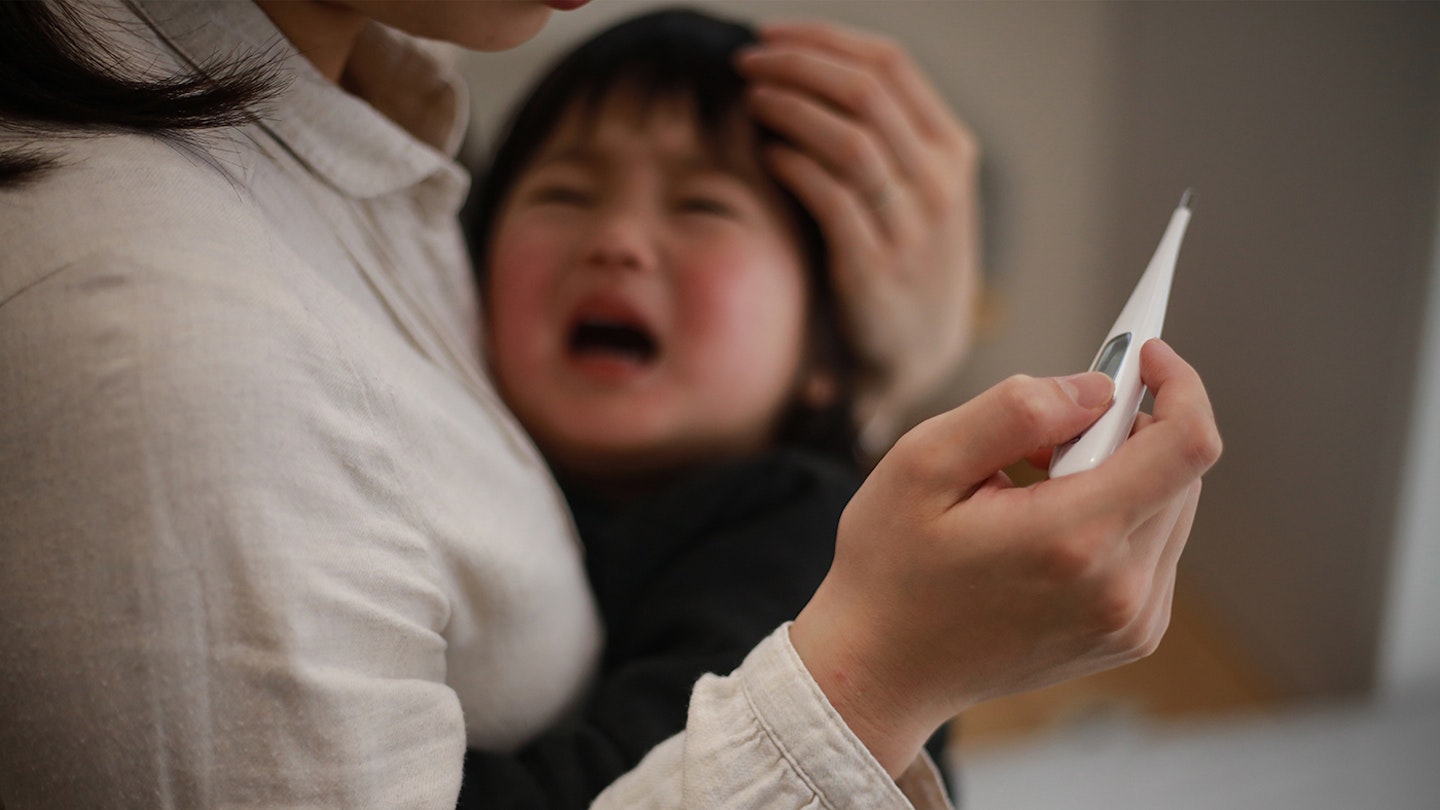The mere mention of meningitis in babies fills all parents with dread. The rash that doesn't go away is the symptom we all hear about.
Meningitis is an infection of the membranes that surround the brain and spinal cord. Once the membranes are infected, they can become swollen, leading to nerve and brain damage.
Meningitis is relatively uncommon – but it’s still important to be aware and get clued up on what it could mean for your child.
Types of meningitis
Meningitis is broken down into two kinds – bacterial and viral. ‘Bacterial meningitis is the worst type,’ says GP Rebekah Gibbons. ‘It can cause severe brain damage and blood poisoning.’ Around 2,500 children develop bacterial meningitis in the UK every year – the illness is most common in the under-fives.
Viral meningitis is more common but less serious and most children make a full recovery. ‘As it’s impossible to rule out bacterial meningitis without tests, both should be treated as a medical emergency,’ says Rebekah.
How meningitis is spread
Infections that cause meningitis can be spread through:
• sneezing
• coughing
• kissing
Meningitis tends to be caught from people who carry these viruses or bacteria in their nose or throat but are not ill themselves.
Meningitis symptoms in babies
While the meningitis rash is the most well-known symptom, there are plenty of other signs that happen beforehand. The infection starts as mild flu-like symptoms and progress to blood poisoning in a matter of hours. Key symptoms include fever (a temperature of more than 38˚C), vomiting, refusal to feed, a high-pitched or moaning cry and irritability.
Babies may also develop pale blotchy skin, a bulging fontanelle (the soft dip in the top of the skull), rapid breathing, a floppy body or stiffness with jerky movements, and cold hands and feet. A stiff neck and sensitivity to bright lights are also typical. ‘If blood poisoning sets in, this can also trigger a purple spotty rash that doesn’t fade when you press a glass tumbler on it,’ says Rebekah.
Signs and symptoms of meningitis
• High fever
• Cold hands and feet
• Vomiting
• Refusal to feed
• Feeling agitated and not wanting to be picked up
• Unusually high-pitched or moaning cry
• A stiff body with jerky movements or else floppy and lifeless
• Grunting or breathing rapidly
• Pale, blotchy skin, and a red rash that doesn't fade when a glass is rolled over it
• Tense, bulging soft spot on their head (fontanelle)
• Extreme shivering
• Sometimes diarrhoea
The tumbler test
If your baby is showing a new rash or spots, give the Tumbler Test a go.
-
Press a clear glass tumbler firmly against the rash. If you can see the marks clearly through the glass seek urgent medical help immediately.
-
Check the entire body. Look out for tiny red or brown pin-prick marks which can change into larger red or purple blotches and blood blisters. The darker the skin the harder it is to see a septicaemic rash so check lighter areas like the palms of hands and soles of feet or look inside the eyelids and the roof of the mouth.
When to see your GP
Meningitis develops very quickly, sometimes within hours. You may notice any of the above symptoms and feel concerned. ‘Bear in mind that not all children develop the rash,’ says Rebekah. ‘But don’t wait for it to appear to seek help. If it’s not possible to see a GP urgently, take your child to the nearest A&E department or call 999.’
Blood tests and possibly a sample of fluid taken from your baby’s spine will help to diagnose your child – if necessary, intravenous antibiotics will be given. The sooner your child receives treatment the better the chances of recovery.
Treatment of meningitis
Following the identification of meningitis, the baby would be urgently admitted into a hospital and treated with antibiotics. A test for bacterial meningitis is carried out by applying lumbar puncture, a procedure of taking out a sample of cerebrospinal fluid in order to establish whether a child has meningitis. If they have viral meningitis, antibiotics treatment will stop. In the most severe of cases, the baby can be taken into intense care unit where she will remain under close observation.
Viral meningitis is also an emergency, but the treatment for it is pain relievers, drinking lots of fluid and resting, rather than taking antibiotics. However, they may be still used in the beginning until viral meningitis is diagnosed.
Vaccinations against meningitis
• Vaccinations can offer some protection against certain causes of meningitis. These include:
• Meningitis B vaccine – offered to babies aged 8 weeks, followed by a second dose at 16 weeks and a booster at 1 year
• 6-in-1 vaccine – offered to babies at 8, 12 and 16 weeks of age
• Pneumococcal vaccine – offered to babies born before 1 January 2020 at 8 and 16 weeks and 1 year of age; babies born on or after 1 January 2020 have 2 doses at 12 weeks and 1 year
• Hib/MenC vaccine – offered to babies at 1 year of age
• MMR vaccine – offered to babies at 1 year and a second dose at 3 years and 4 months
• Meningitis ACWY vaccine – offered to teenagers, sixth formers and "fresher" students going to university for the first time
What can you do?
The most important thing you can do is to make sure your child is up to date with the jabs as listed above. As well as this, ensuring your baby has a varied diet, including a diversity of fruit and vegetables once they wean is important for strengthening the immune system. ‘Other than that, the most important thing you can do is to be vigilant for any worrying symptoms,’ says Rebekah.
For more information visit the NHS and meningitis.org.
